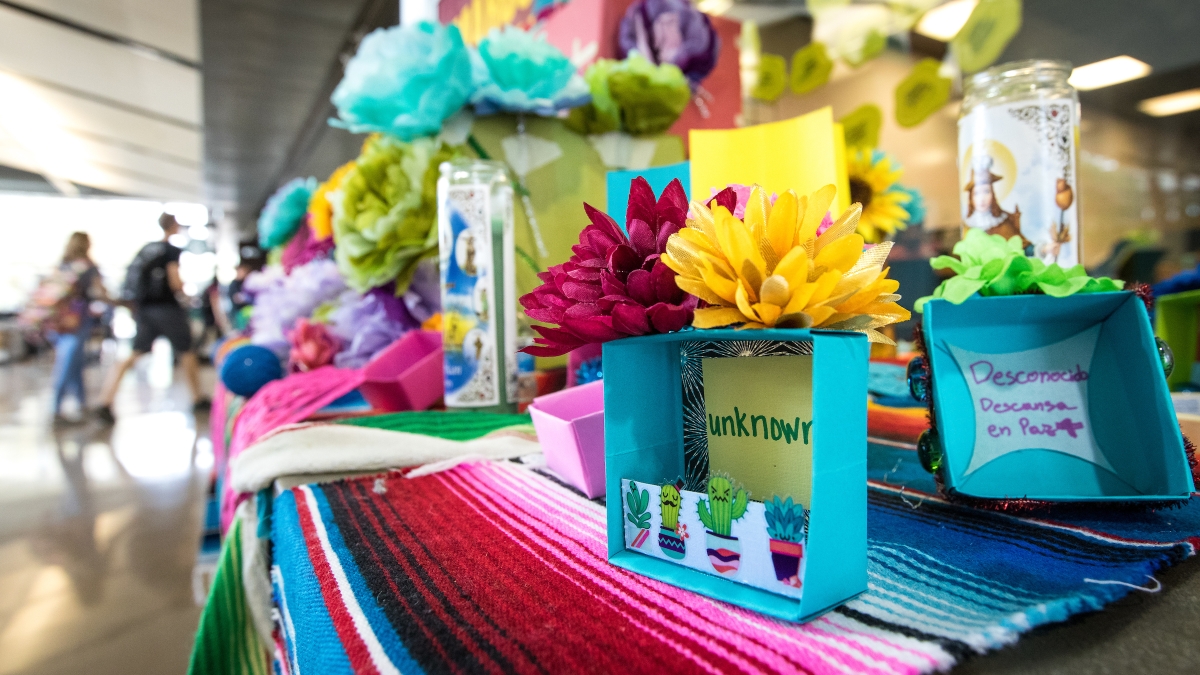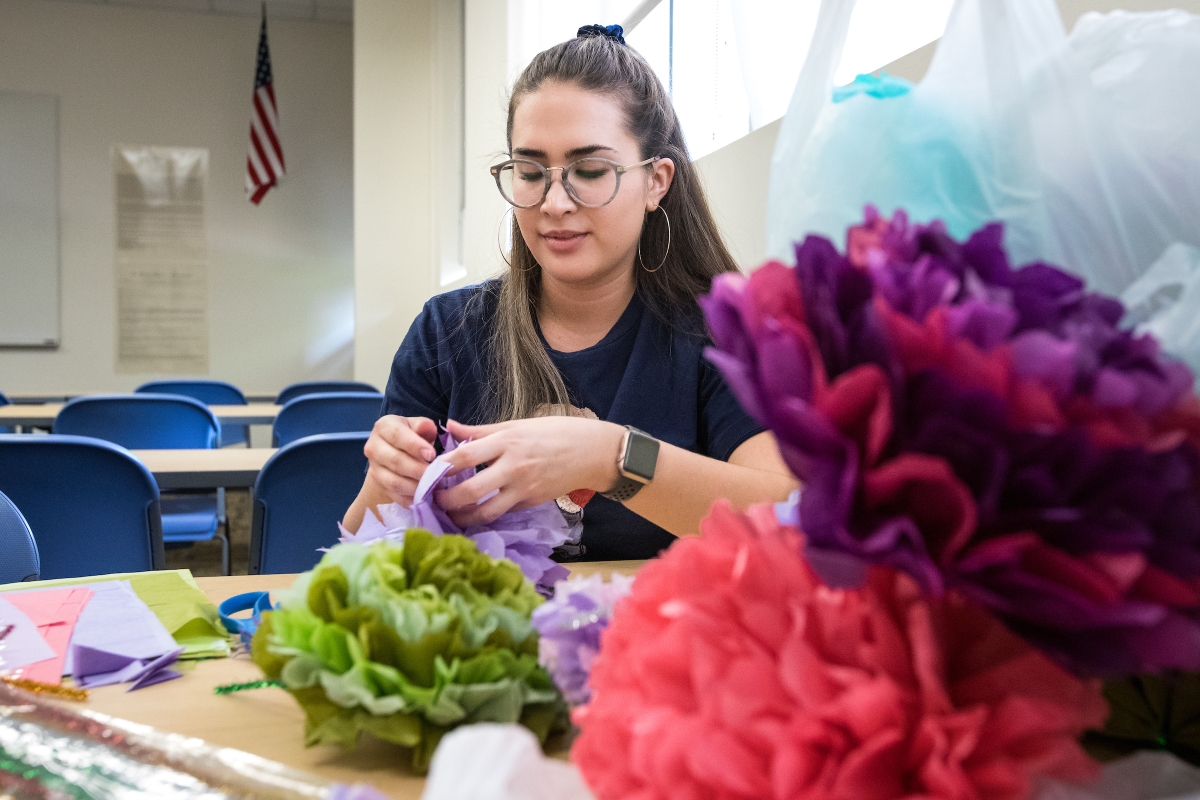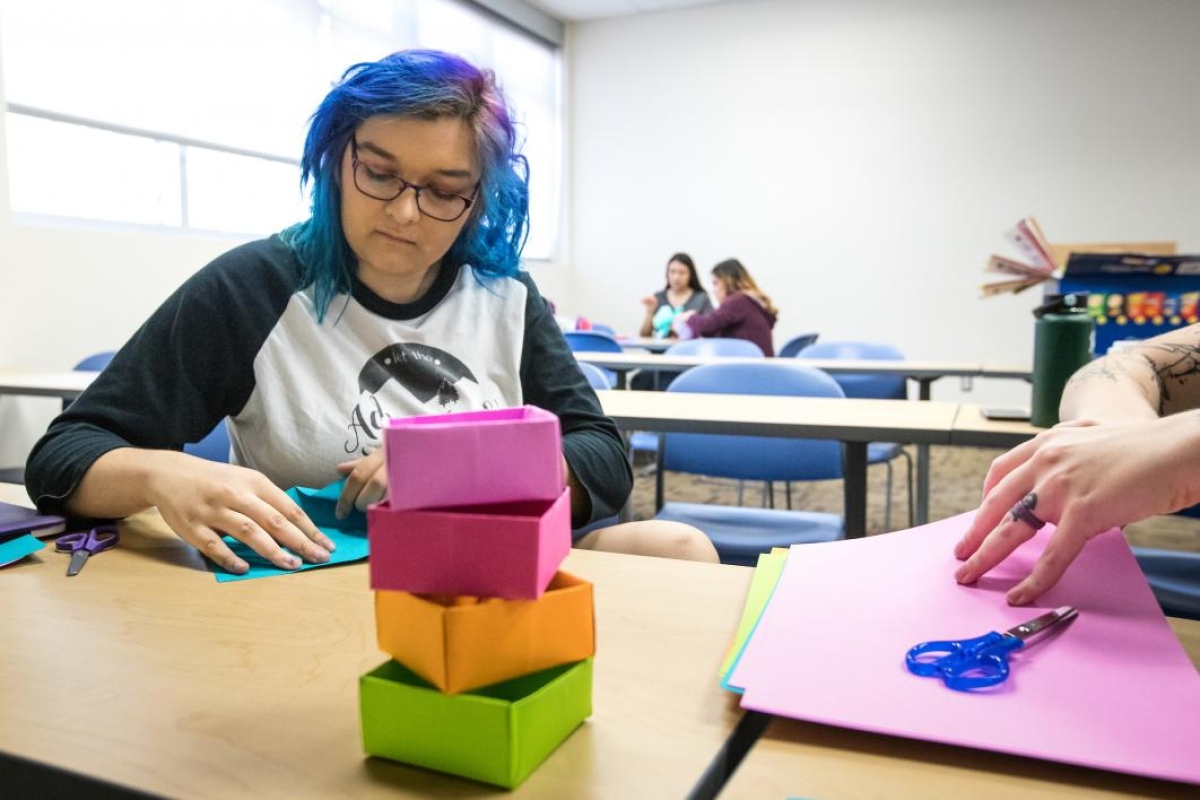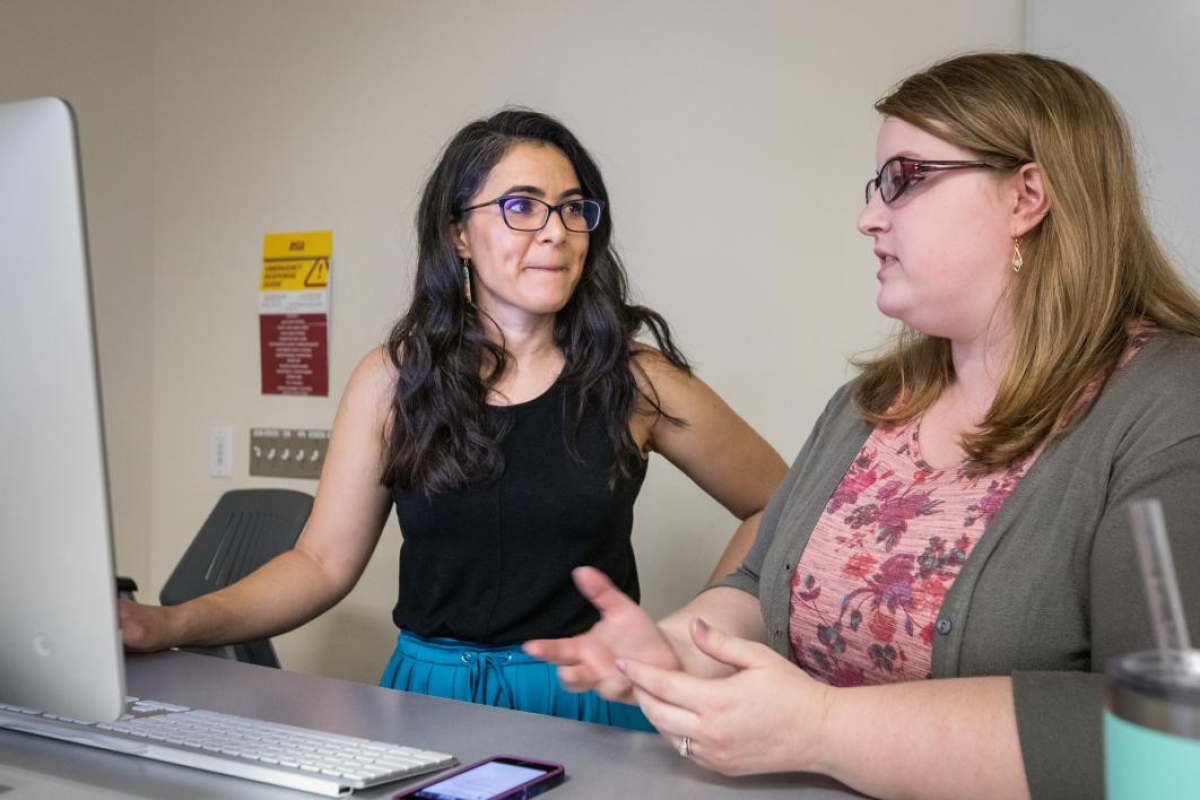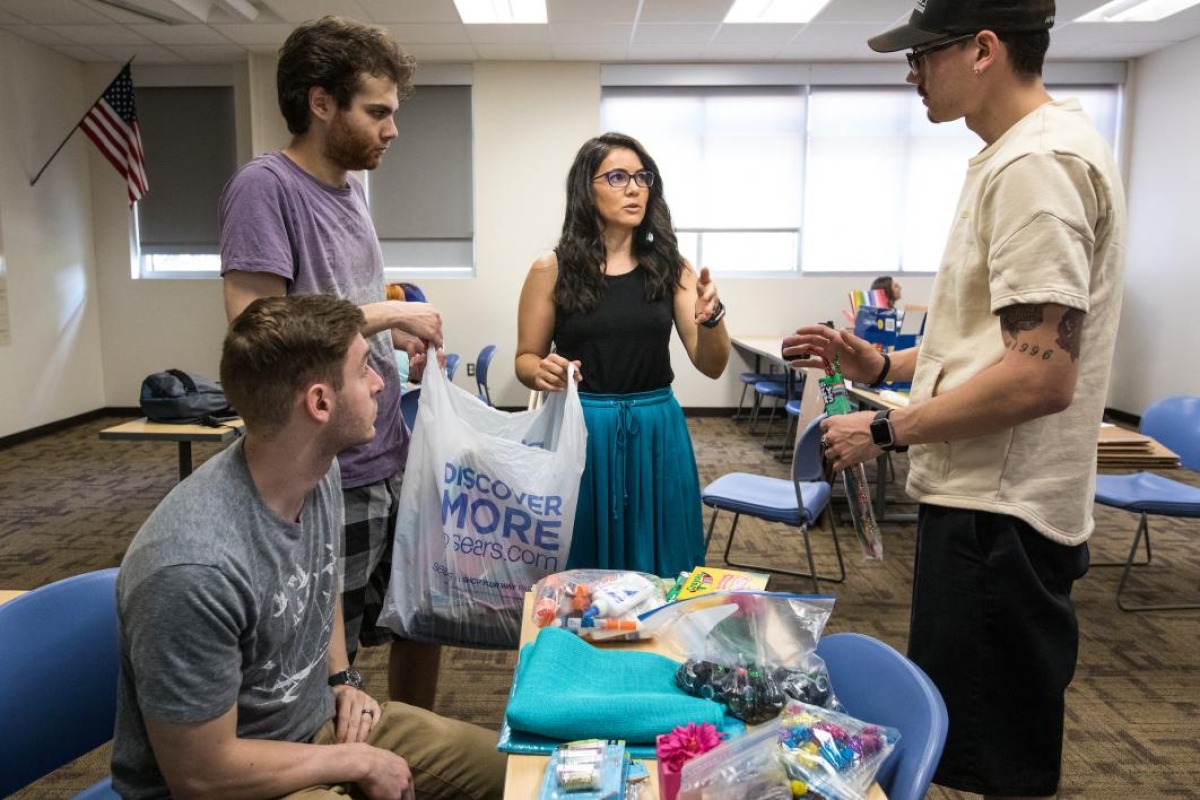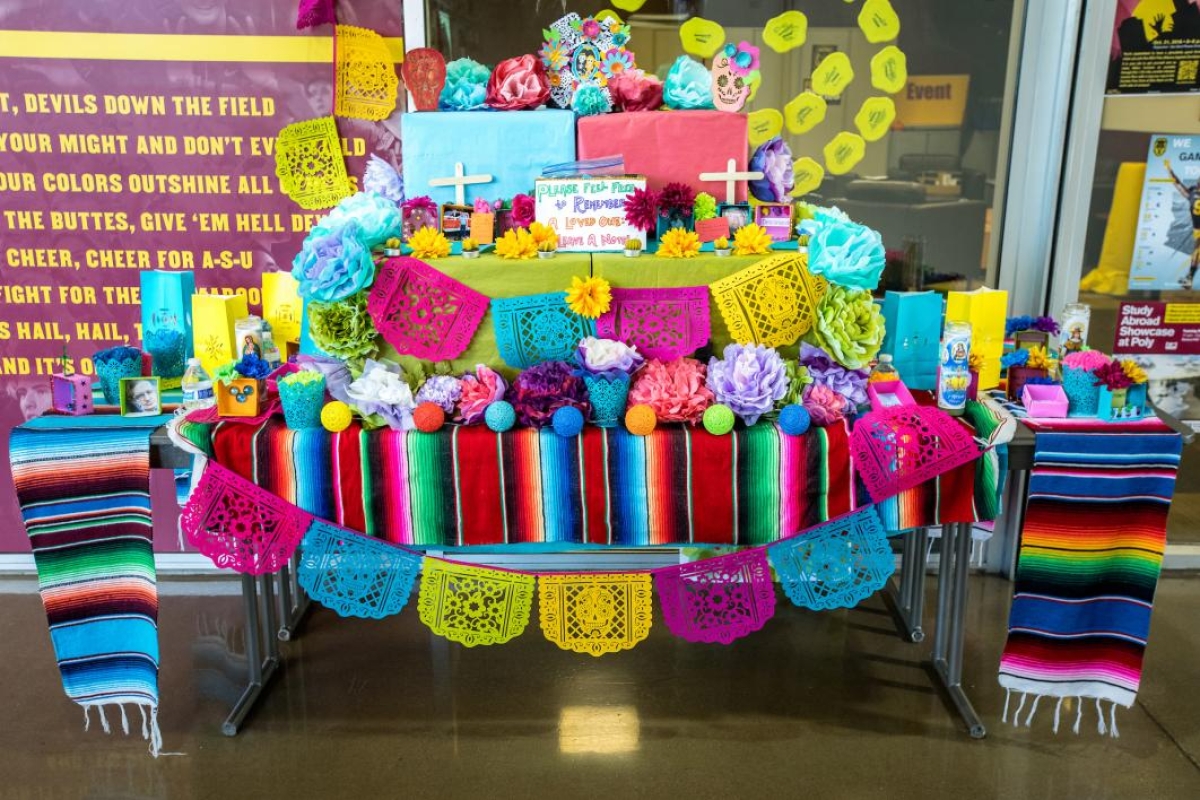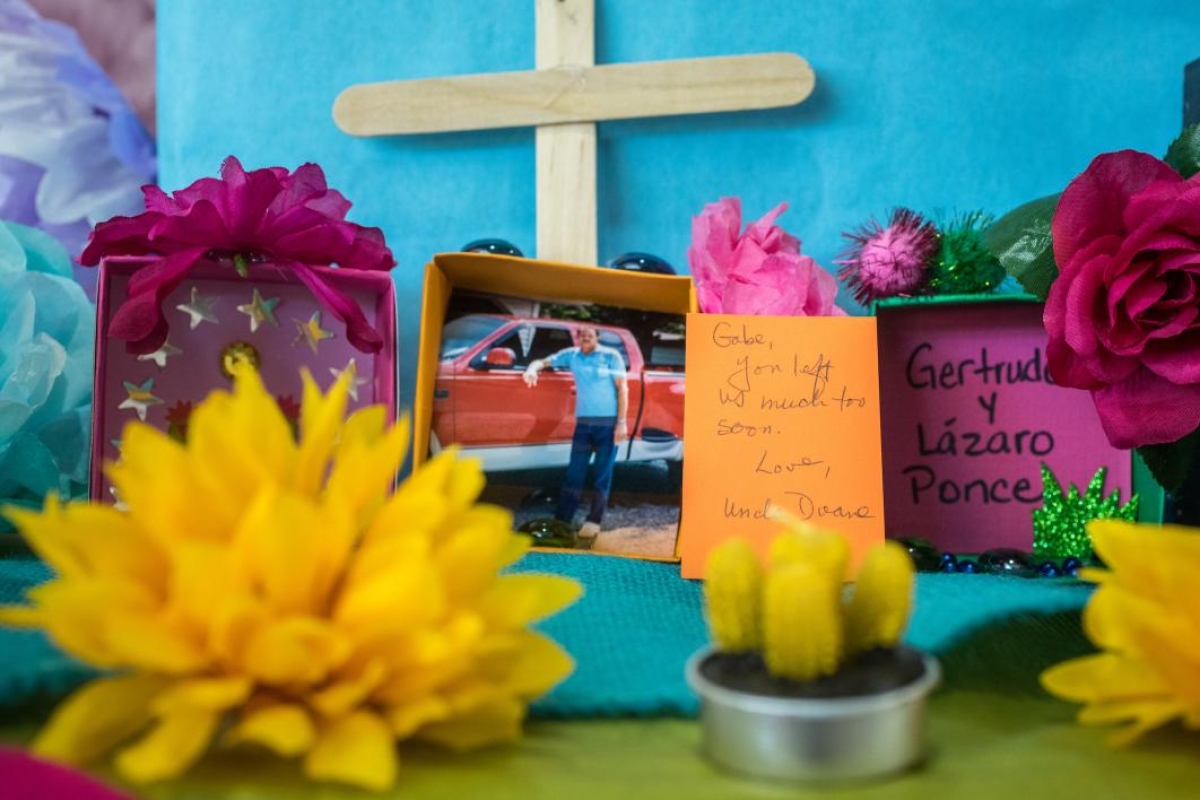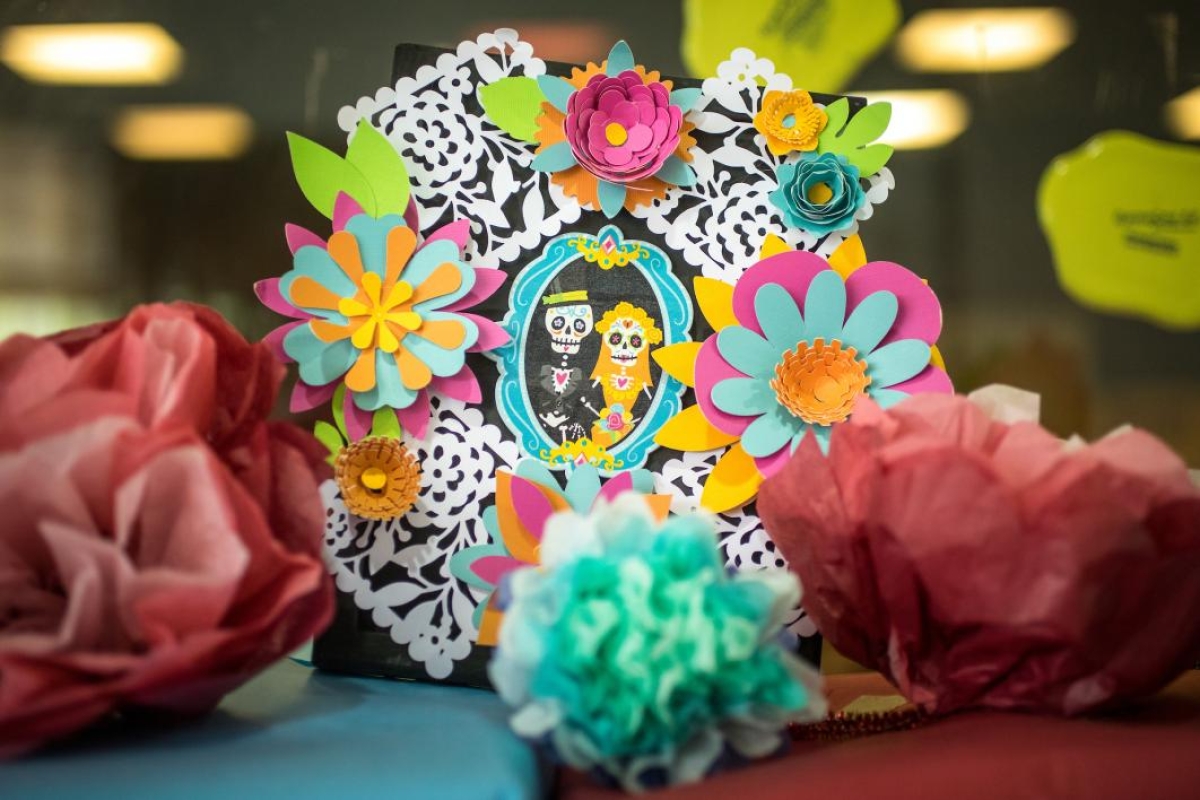The Day of the Dead, or Día de los Muertos, is a Hispanic tradition celebrated annually Oct. 31 through Nov. 2 in remembrance of lost loved ones.
This year, some students at Arizona State University are putting a unique twist on the holiday by incorporating their research on transborder issues into a personalized Day of the Dead altar — or ofrenda — that will be displayed in the Student Union on ASU’s Polytechnic campus.
The students created the altar as part of their Transborder Chicano Literature class and split into teams to research, design and construct the final product, which will be displayed Oct. 25 through Nov. 10.
History senior Holly Jones participated in the research for the ofrenda.
“The traditional Day of the Dead altar is to honor people who have passed,” Jones said. “Usually it’s the families that set up these altars for their deceased ancestors. They will set up the altar … and place different foods and different things that will provide smells like flowers and candles to essentially call back their loved ones' spirits.
“What we are going for with our altar is to essentially make note of the deaths that occur when migrants are coming across the U.S.-Mexico border.”
Just like on a traditional ofrenda, the class will place pictures of their passed loved ones to remember their lives — but the altar also aims to remember the thousands of unnamed individuals who die crossing the border every year.
English junior Jasmine Nungaray, who was part of the team responsible for designing the altar, said that one of the goals of the project was to cut through the partisan noise that clouds conversations about immigration and border crossings in America.
"We really wanted to create a story that was relevant to today but wasn’t overly political," she said.
"We just decided to hone down on the concept of family, which is a big theme we’ve read about so far in this class. The story that we wanted to tell was how families were being affected on their way to the U.S. border, as well as once they get across it. So we just really wanted to highlight the struggle that migrants have to take when they decide to come over to the U.S.”
Nungaray said that the topic fits with the holiday, "because a lot of the migrants that come over … actually die within the desert due to the lack of resources, and there’s family members over at this side of the border that don’t know what happened to them and never will know what happened to them."
"So how are they supposed to be remembered?” Nungaray asked. “This is our chance to really remember those that don’t really have a chance to be remembered because no one knows where they are.”
Dylan Meador, a junior studying biology who was part of the team responsible for constructing the altar, said that it is designed to get people to take pause and actually think about the holiday.
“I hope that when people walk by and look at this, they will actually start thinking about it. Instead of it just being something that they do around Halloween, to look cute around sugar skulls or something, (they will) actually remember their family and remember the people that have passed on," Meador said.
"(It's) taking the cultural and mixing it with the scholarly,” he said.
Assistant Professor Vanessa Fonseca-Chávez, who teaches the class and has erected her own altars on campus over the past few years, said that the altar was an important way to recognize the political and educational aspects of Hispanic heritage.
“A lot of times what we do in Hispanic Heritage Month is we gear ourselves toward cultural activities, and we forget about the political, educational, activist aspect of it, and so I wanted them to be able to think about both things,” Fonseca-Chavez said.
When you go by the altar you can get a sense of what it looks like for people to put one up and how it reflects the tradition, she said.
"But then you can grab a pamphlet and learn about how borders and migration are important to us … what it means to think about the thousands of people who are unnamed.”
Top photo: The completed Day of the Dead altar, researched, designed and built by Assistant Professor Vanessa Fonseca-Chávez' ENG363 Transborder Chicano Literature class. The theme for the work is borders and migration, based on the student's research related to crossing on the Arizona border. (Note: Desconocido translates to unknown, for the unnamed border crossers who died along the way.)
More Arts, humanities and education
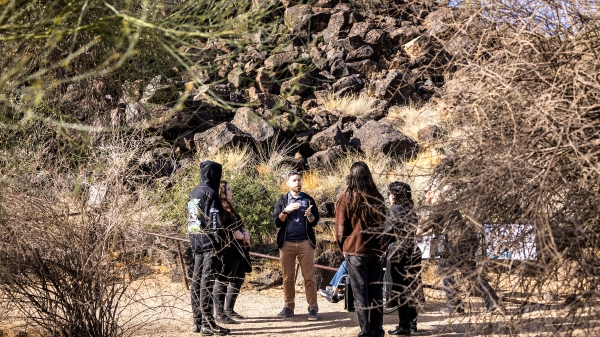
Petroglyph preserve celebrates 30th anniversary with ancient, modern tales
The Deer Valley Petroglyph Preserve provides a beautiful walk through a pristine desert where chuckwalla lizards are as plentiful as the cacti that comes in many shapes and sizes.It’s also a step…
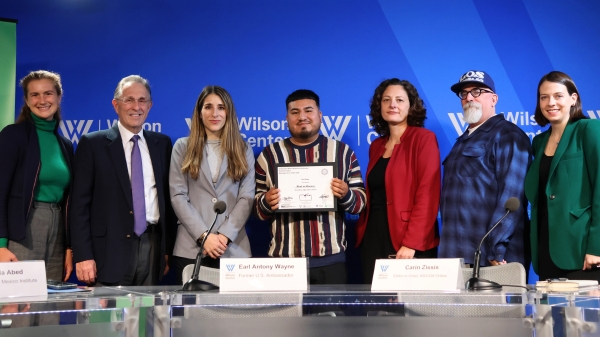
Kaleidoscope short film contest inspires powerful binational filmmaking in its second year
“We come to this country not to steal anybody’s jobs but to take advantage of the opportunities that the rest ignore. We’ve been taking care of the American soil for many years. But our hands will…
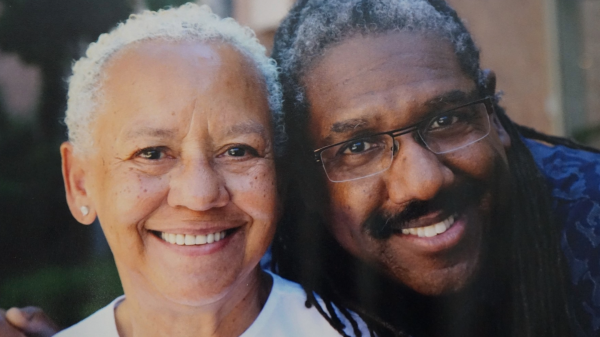
ASU's Neal Lester reflects on life, death of poet Nikki Giovanni
When Neal Lester heard on Monday that poet and activist Nikki Giovanni had died, the news hit hard.Lester, the founding director of Arizona State University’s Project Humanities and a Foundation…
